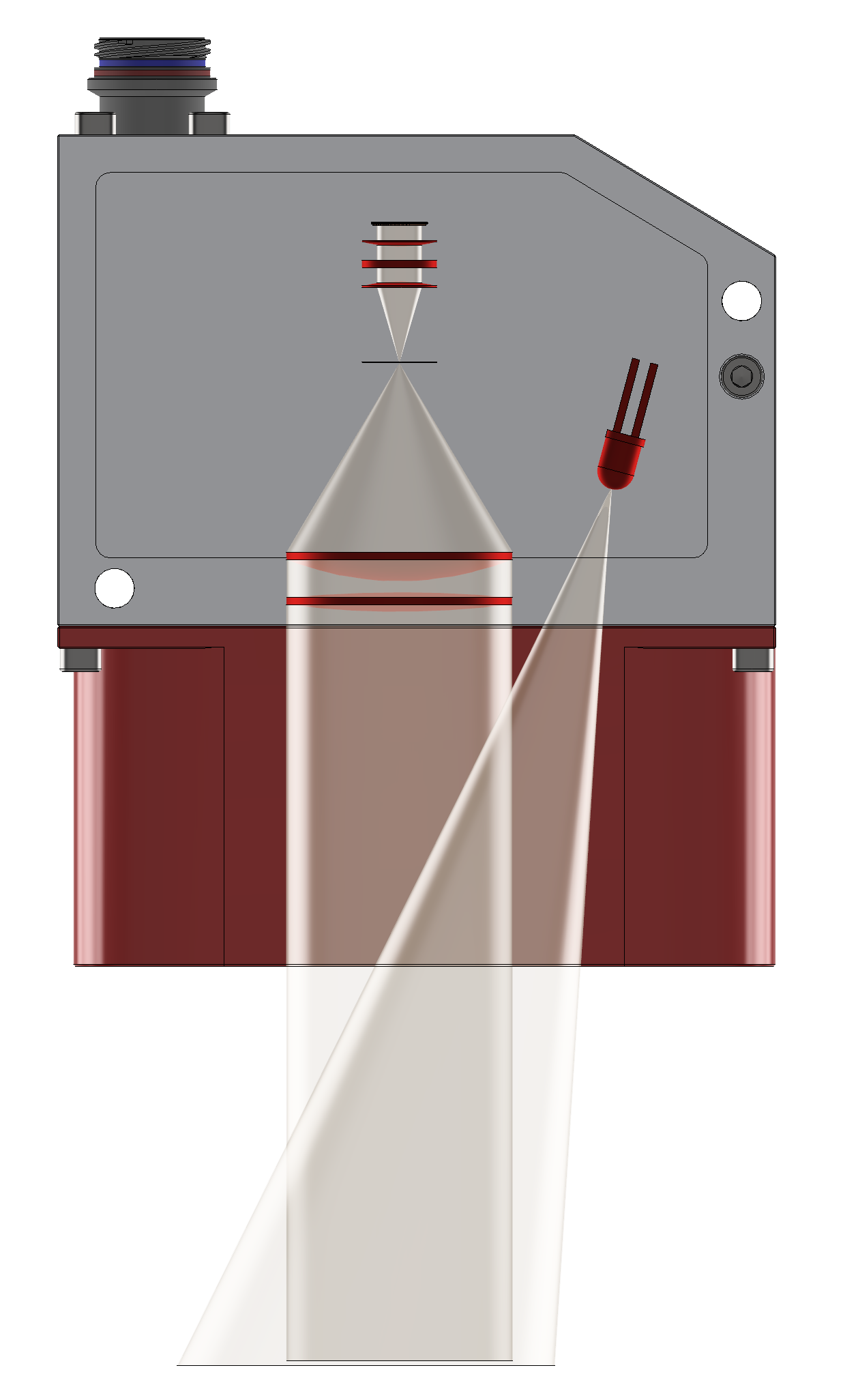The functional principle of the sensor is based on the proven spatial filter method.
The sensor uses the structure of a surface as a basis for measuring movements. Mounted at a sensor-specific distance from the surface, the structure is captured by the sensor. Long-life infrared LED lighting enables the measuring point to be illuminated independently of external lighting situations.
The structure of the surface to be measured is imaged on a grid-like photodiode with the help of telecentric optics. As the sensor moves across the surface, the photodiode generates a speed-dependent sinusoidal current. The frequency of the current is proportional to the speed.
For the 2-axis speed measurement, a photodiode specially developed for this application with two highly integrated grid structures for longitudinal and transverse speed is used.
An IMU inside the sensor records the acceleration and rotation rates in 3 axes. The fusion of the spatial frequency signals with the accelerations and angular rates enables an improvement in signal quality and dynamics. In addition, the user can be provided with other measurands such as pitch and roll angles at the same time. Restrictions on the technologies used are compensated for by the fusion.
